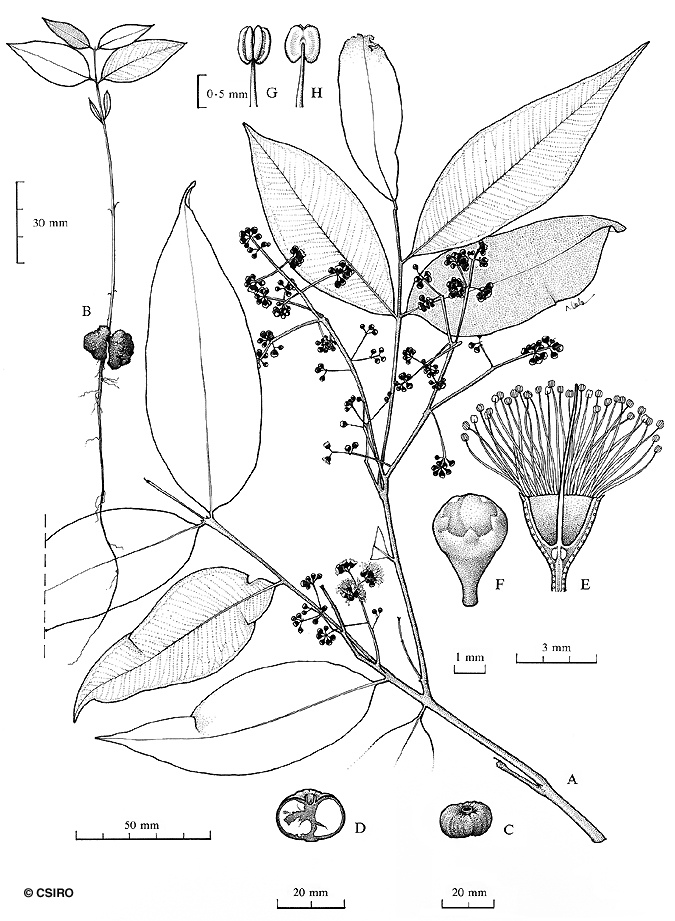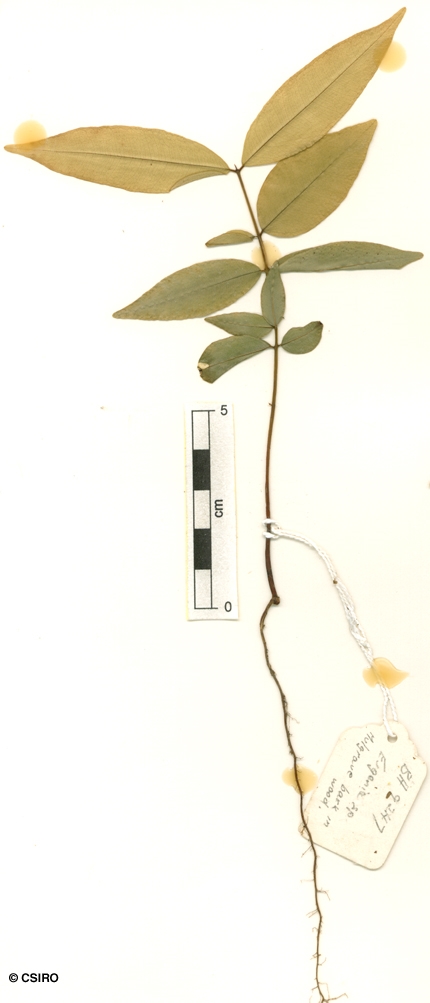Australian Tropical Rainforest Plants - Online edition
Syzygium mulgraveanum (B.Hyland) Craven & Biffin







Craven, L.A., Biffin, E. & Ashton, P.S. (2006) Blumea 51(1): 138.
Inflorescence branches, particularly the finer branches conspicuously 4-angled or with four short rugate wings, bracts deciduous, but often present at anthesis. Calyx tube (hypanthium) + pedicel about 2.5-3.5 mm long, calyx tube (hypanthium) about 2-3 mm diam., calyx lobes triangular, about 0.5 mm long. Petals +/- orbicular, about 1.5-2 mm diam., oil dots comparatively large, up to 20 per petal. Outer staminal filaments about 3-6 mm long, anthers about 0.3 x 0.3 mm, gland absent or inconspicuous. Ovules pendulous from placentas near the apex of each locule, ovules about 3 or 4 per locule. Style about 3-7 mm long, approximating the stamens.
Fruits very depressed, almost discoid, attaining about 12 x 20 mm, apex excavated, surface longitudinally ribbed or grooved, calyx lobes persistent but inconspicuous, pericarp forming a very thin skin (about 0.2 mm thick) around the cotyledons, testa absent or indistinguishable from the pericarp. Seed solitary, only slightly smaller than the fruit, pericarp free from the cotyledons but not easily separable because of their grooved surfaces. Cotyledons ruminate with an amorphous, pale (not dark, even though the structure is pale it may be darker than the surrounding tissue in the cotyledons) central structure with a distinct vascular connection with the base of the fruit. Radicle basal, cotyledonary stipules present.
This species has no commercial value because of the sections of bark included in the wood. Wood specific gravity 0.72. Hyland (1983).





